| Columns Retired Columns & Blogs |
Placette Active Linestage preamplifier Measurements
Sidebar 3: Measurements
As specified, the Placette Active Linestage (ALS) offers a maximum gain of unity; ie, the maximum signal level is the same as that of the source components driving it. Owners should make sure, therefore, that their source components offer a sufficiently high signal level to fully drive their amplifiers. The 15dB attenuation switch on the Placette's remote control actually reduced the gain by 15.6dB, which is close enough to the specification. The ALS preserved absolute polarity.
The input impedance was close to specification at 18.5k ohms at all frequencies, though the output impedance was a little higher than the specified 10 ohms, at 55.5 ohms. This is still low in absolute terms, however. With the volume control full but the input short-circuited, the unweighted, wideband signal/noise ratio (ref. 1V output) was lower than expected, at 72.2dB. This was due to some hum that I couldn't eliminate by adjusting the Placette's rear-panel ground-lift switch or experimenting with the grounding between the ALS and my Audio Precision System One, and it improved to 98.7dB with an A-weighted measurement. DC offset was less than 200µV—ie, nonexistent.
The Placette's frequency response was perfectly flat from 10Hz to 100kHz, and down just 0.2dB at 200kHz, into loads ranging from 100k ohms to 600 ohms (fig.1). This measurement was taken with the volume control set to its maximum. Reducing the volume to –20dB did slightly but inconsequentially reduce the ultrasonic bandwidth, to –1dB at 200kHz. The maximum channel separation was superb, at almost 120dB at 3kHz (fig.2), though it degraded slightly at high frequencies (due to capacitive coupling somewhere in the circuit) and at low frequencies (probably due to increasing power-supply impedance). It was never less than excellent, however.
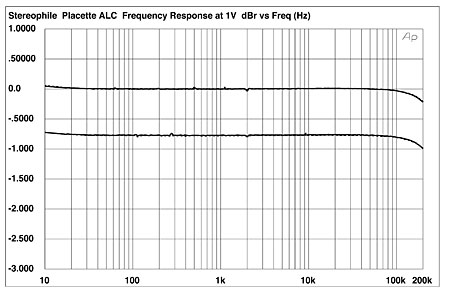
Fig.1 Placette Active Linestage, frequency response at 1V into 100k ohms (top) and 600 ohms (bottom) with volume control set to maximum (0.5dB/vertical div., right channel dashed).
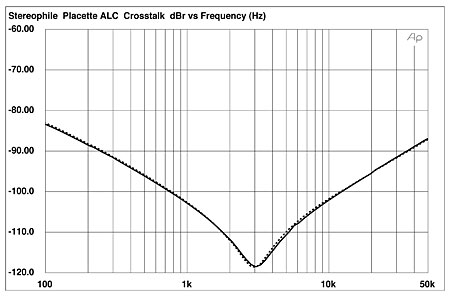
Fig.2 Placette Active Linestage, channel separation (10dB/vertical div.).
Plotting the THD+noise percentage against output level (fig.3) really just shows the effect of the noise. Because of the ALS's lack of gain, I reached the 15V output limit of my signal generator before I reached the ALS's clipping point. Actual levels of distortion, both harmonic (fig.4) and intermodulation (fig.5), were extremely low.
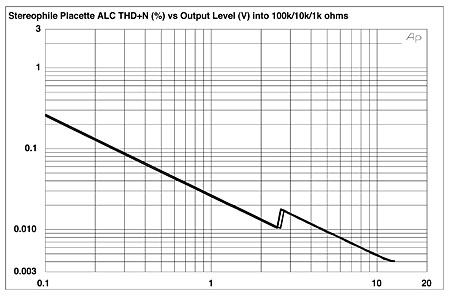
Fig.3 Placette Active Linestage, distortion (%)vs 1kHz output level into (from bottom to top): 10k, 100k, 1k ohms.
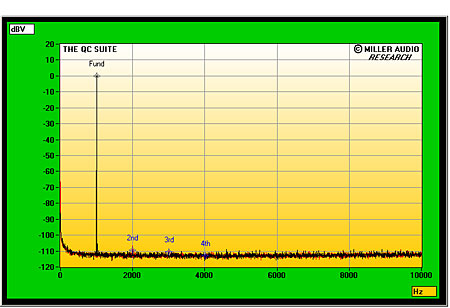
Fig.4 Placette Active Linestage, spectrum of 1kHz sinewave, DC–10kHz, at 1V into 8k ohms (linear frequency scale).
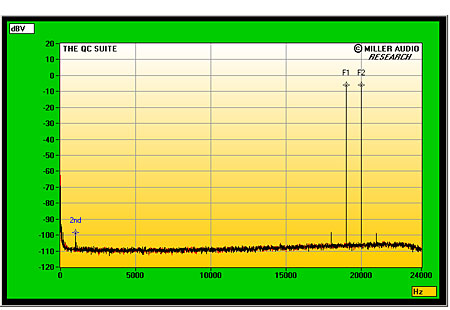
Fig.5 Placette Active Linestage, HF intermodulation spectrum, DC–24kHz, 19+20kHz at 1V peak into 8k ohms (linear frequency scale).
Placette's Active Linestage offers excellent measured performance.—John Atkinson
- Log in or register to post comments




































